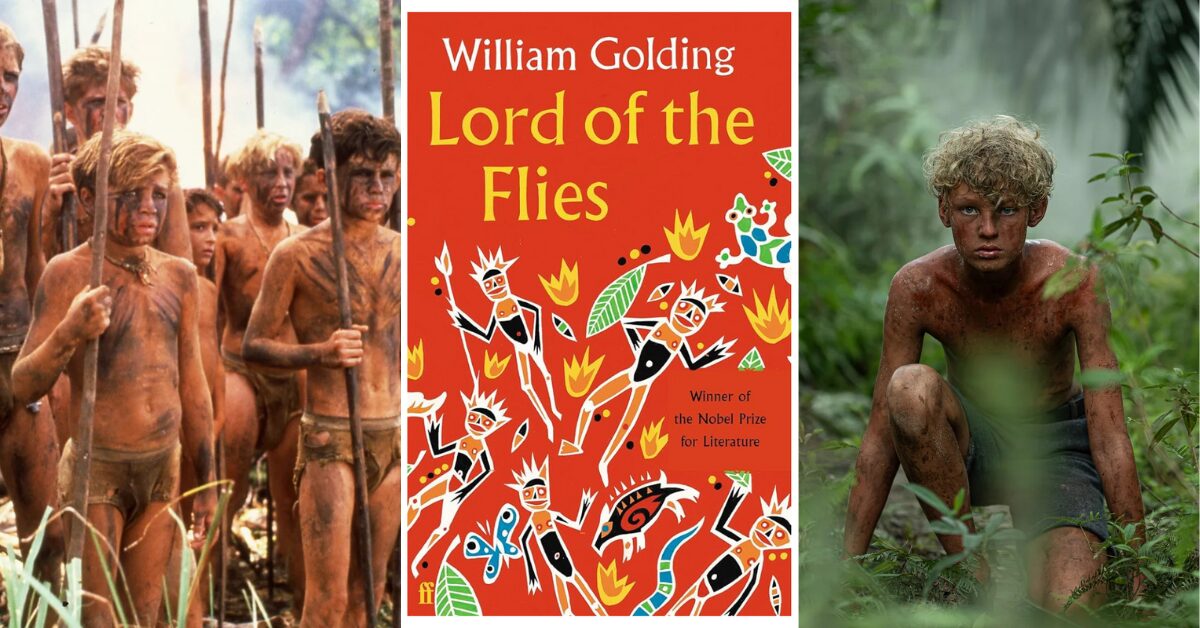The dream of making a living as an author is compelling, but the financial reality is far more complex than most aspiring writers realize. While bestselling authors like James Patterson earn $89 million annually and J.K. Rowling has built a billion-dollar empire, these success stories represent a tiny fraction of working authors.
Understanding the true economics of authorship, from advances and royalties to alternative income streams, is essential for anyone serious about building a sustainable writing career.
The Author Income Reality Check
The $6,000 Reality: What Most Authors Earn
According to recent Authors Guild surveys, the median income for published authors hovers around $6,000 annually from their writing. This stark figure includes both traditionally published and self-published authors, revealing that the vast majority of writers earn far less than minimum wage from their books alone.
Even authors with multiple published titles often struggle to reach five-figure annual earnings from their literary work. The distribution of author income follows an extreme power law: the top 1% of authors capture roughly 60% of all author earnings, while the bottom 80% share less than 10% of total industry revenue.
This means that for every millionaire author, thousands earn less than $1,000 per year from their writing.
Why 95% of Authors Can’t Quit Their Day Jobs
The mathematics are unforgiving. To replace a modest $40,000 annual salary through book sales alone, an author must sell approximately 25,000-50,000 books per year at typical royalty rates. For context, most books sell fewer than 3,000 copies in their lifetime.
The combination of low royalty percentages, high competition, and market saturation means that even dedicated, prolific authors often maintain other income sources throughout their careers.
Traditional publishing contracts, while prestigious, rarely provide immediate financial security. Publishers typically spread marketing budgets across hundreds of titles, leaving individual books to compete for limited promotional resources.
Self-published authors face the additional challenge of funding their editing, design, and marketing efforts upfront.
Income Timelines: When to Expect Your First Profitable Year
New authors should prepare for a 3-5-year timeline before seeing meaningful income from their writing. The first year is typically focused on learning the craft and industry basics.
Years two and three involve building a readership and establishing a publishing rhythm. Most authors don’t see a consistent four-figure monthly income until years four or five, assuming they publish regularly and build their audience strategically.
The key milestone is the “backlist effect”—when multiple published titles begin generating cumulative passive income. Authors with 5-10 published books often experience a tipping point where monthly royalties become predictable and substantial.
Traditional Publishing Economics
The Advance Trap: Why Big Upfront Money Isn’t Always Good
Publishing advances can be misleading indicators of future success. An advance is essentially a loan against future royalties—authors must “earn out” their advance through book sales before receiving additional payments.
A $50,000 advance might sound impressive, but if the book only earns $30,000 in royalties, the author receives no additional income and may struggle to secure future publishing deals.
Large advances also create pressure for immediate commercial success. Publishers expect books with substantial advances to perform well quickly, leading to aggressive sales targets and potential disappointment if expectations aren’t met. Some authors prefer smaller advances with better long-term royalty potential.
Royalty Rates Decoded: 6-15% and What It Means
Traditional publishing royalties typically range from 6-15% of cover price, varying by format and sales volume. For a $20 paperback with a 10% royalty rate, authors earn $2 per copy sold. However, this calculation becomes complex when considering:
- Wholesale discounts (books sold to retailers at 40-55% off cover price)
- Returns (unsold books sent back to publishers)
- Agent commissions (typically 15% of author earnings)
- Escalating royalty rates based on sales thresholds
The effective royalty rate is often lower than the stated percentage, making it crucial for authors to understand the full financial structure of their contracts.
Hidden Costs: What Publishers Deduct Before You Get Paid
Publishers may deduct various expenses from author royalties, including:
- Editing and proofreading costs
- Cover design and typesetting
- Marketing and promotional expenses
- Returns and damaged copies
- Currency conversion fees for international sales
These deductions can significantly impact net author income, particularly for books with modest sales figures. Authors should carefully review contract terms regarding allowable deductions and expense sharing.
Self-Publishing Profit Margins
Why Self-Published Authors Keep 35-70% vs. 6-15%
Self-publishing platforms offer dramatically higher royalty rates than traditional publishers. Amazon Kindle Direct Publishing provides 35% royalties for books priced under $2.99 and 70% for books priced between $2.99-$9.99.
This means a self-published author earning 70% royalties on a $4.99 e-book receives $3.49 per sale, compared to approximately $0.50-$1.00 for a traditionally published author.
The higher royalty rates reflect the different cost structures: self-published authors handle their editing, design, and marketing, while traditional publishers provide these services in exchange for their larger revenue share.
Genre-Specific Earning Potential
Romance: The $1 Billion Genre That Pays
Romance fiction represents the largest segment of the fiction market, generating over $1 billion in annual sales. The genre’s dedicated readership and frequent purchasing patterns create excellent earning potential for prolific authors.
Successful romance authors often publish 4-12 books annually and build loyal followings that purchase new releases immediately. Romance subgenres like paranormal, historical, and contemporary each have distinct market dynamics and earning potential.
Authors who establish themselves in popular subgenres can often maintain a consistent five-figure monthly income through series writing and regular publication schedules.
Literary Fiction: Prestige vs. Paychecks
Literary fiction offers critical acclaim and cultural prestige but typically provides lower commercial returns than genre fiction. Literary novels often have smaller print runs, longer sales cycles, and more limited mass market appeal.
However, literary fiction can provide opportunities for grants, fellowships, teaching positions, and speaking engagements that supplement book income.
The literary fiction market rewards artistic achievement and critical recognition over commercial success, making it challenging but potentially rewarding for authors to prioritize artistic expression over immediate financial returns.
Non-Fiction: Higher Advances, Lower Volume
Non-fiction typically commands higher advances than fiction, particularly for authors with established expertise or platforms. Business books, memoirs by public figures, and practical guides often receive substantial publisher investment.
However, non-fiction sales can be more volatile and dependent on current events, trends, and media coverage.
Successful non-fiction authors often leverage their books as marketing tools for consulting, speaking, and other business opportunities, creating multiple revenue streams from their expertise.
Children’s Books: The Royalty Goldmine
Children’s books can provide exceptional long-term earning potential due to their evergreen nature and gift-giving market. Picture books and early readers often maintain steady sales for decades, creating reliable passive income streams.
However, the children’s market is highly competitive and quality-dependent, requiring professional illustration and design. Successful children’s authors often develop series and characters that generate multiple books, merchandise opportunities, and licensing deals.
Why Pricing Strategy Can Double Your Income
Strategic pricing can dramatically impact author earnings. Self-published authors have the flexibility to experiment with pricing models:
- Premium pricing ($7.99-$12.99): Lower volume, higher per-unit profit. This strategy works best for established authors with loyal readerships who are willing to pay more for quality content and don’t require price incentives to purchase.
- Volume pricing ($2.99-$4.99): Higher volume, moderate per-unit profit. This sweet spot often maximizes total revenue by balancing accessibility with meaningful per-sale earnings, making it ideal for building a sustainable income base.
- Loss-leader pricing ($0.99-$1.99): Maximum volume, minimal per-unit profit. Authors use this primarily for reader acquisition and series launches, accepting lower profits on first books to hook readers for higher-priced sequels.
Many successful authors use varied pricing strategies across their backlist, offering entry-level books at lower prices to attract new readers then monetizing through higher-priced sequels and series.
The Compound Effect: How Backlist Builds Wealth
Each published book becomes a potential income-generating asset that can produce royalties for decades. Authors with 10+ published titles often experience exponential income growth as their backlist creates multiple discovery points for new readers. This compound effect explains why prolific authors often out-earn those focused on single “breakthrough” titles.
Foreign Rights and Translation Income
International sales can significantly boost author earnings through:
- Foreign language translations: License your book to publishers in other countries who translate and market it locally. Authors typically earn 5-10% royalties on translated editions, with advances ranging from $1,000-$50,000+ depending on the market and your sales history. You can secure these deals through international literary agents or foreign rights specialists who have established relationships with overseas publishers.
- International edition licensing: Sell English-language rights to publishers in other English-speaking markets (UK, Australia, Canada). These deals often provide separate advance payments and royalties for each territory. You can negotiate these directly with international publishers at book fairs or through agents with global networks.
- Audio and film rights sales: License your work for audiobook production in foreign markets or sell film/TV adaptation rights internationally. Audio rights can generate $5,000-$100,000+ per language, while film rights vary dramatically but can reach six or seven figures. You can pursue these through entertainment agents, foreign rights agents, or production companies actively seeking content.
- Global e-book distribution: Upload your books directly to international platforms like Amazon’s global stores, Kobo’s worldwide network, or regional platforms like Storytel (Scandinavia) and BookWalker (Japan). This requires minimal upfront investment and allows you to retain 35-70% royalties while testing international market demand for your work.
Authors should retain foreign rights when possible or negotiate favorable terms for international licensing deals.
The Business Side of Being an Author
Tax Strategies Every Author Should Know
Authors should understand key tax considerations:
- Business expense deductions (home office, research, travel): You can deduct a percentage of your home expenses if you use part of your home exclusively for writing, plus all research materials, writing conferences, and business travel costs.
- Equipment depreciation (computers, software, furniture): Rather than deducting the full cost of expensive equipment in one year, you can spread the deduction over several years, often providing better tax planning flexibility.
- Professional service costs (editing, design, marketing): All costs for editors, cover designers, formatters, and advertising are fully deductible business expenses that can significantly reduce your taxable income.
- Self-employment tax implications: As a self-employed author, you’ll pay both employer and employee portions of Social Security and Medicare taxes (15.3% total) on your net writing income.
- Quarterly estimated tax payments: Since no employer withholds taxes from your royalties, you must make estimated payments four times yearly to avoid penalties and interest charges.
Working with tax professionals familiar with creative businesses can maximize deductions and minimize tax liability.
When to Hire: Editors, Marketers, and Virtual Assistants
Authors should consider professional help when:
- Monthly book income exceeds $2,000: At this income level, you can afford professional services while maintaining profitability, and the quality improvements typically justify the investment costs.
- Administrative tasks consume more than 20% of working time: If you spend more than one day per week on non-writing activities like social media management, email responses, or bookkeeping, hiring help lets you focus on revenue-generating writing.
- Marketing efforts require specialized skills or tools: Professional marketers have access to advanced advertising platforms, data analytics tools, and industry connections that can generate better returns than DIY efforts.
- Quality improvement could significantly impact sales: When poor editing, unprofessional covers, or weak marketing limit your sales potential, professional services often pay for themselves through increased revenue.
Strategic hiring can free authors to focus on writing while improving overall business results.
Digital Age Opportunities
Subscription Models: Patreon, Substack, and Reader Loyalty
Subscription platforms offer authors recurring revenue opportunities:
Patreon:
- Monthly supporter contributions
- Tiered reward systems
- Community-building features
- 5-12% platform fees
Substack:
- Newsletter monetization
- Free and paid subscriber tiers
- 10% platform fee on paid subscriptions
- Growing reader discovery features
Successful subscription models require consistent content creation and strong reader engagement.
The Long Game: Building a 20-Year Career Strategy
Sustainable author careers require long-term thinking:
- Skill development: Continuous craft improvement. Successful authors invest in writing workshops, courses, and feedback systems throughout their careers, understanding that better writing directly correlates with better sales and reader retention.
- Relationship building: Industry and reader connections. Building genuine relationships with other authors, publishing professionals, and readers creates opportunities for collaborations, referrals, and word-of-mouth marketing that have been used over decades.
- Brand evolution: Adapting to market changes. Authors who thrive long-term regularly assess and adjust their brand positioning, genre focus, and marketing strategies to stay relevant as reader preferences and industry dynamics shift.
- Legacy planning: Intellectual property management. This involves organizing copyrights, planning for estate transfer of publishing rights, and creating systems to ensure your work continues generating income for heirs or chosen beneficiaries.
Authors should plan for career longevity rather than immediate success.
When to Pivot: Recognizing Market Shifts
Authors must remain adaptable to industry changes:
- Genre popularity fluctuations: Romance and fantasy may dominate for years, then thriller or sci-fi could surge based on cultural trends, movie releases, or world events. Smart authors monitor bestseller lists and adjust their writing focus accordingly while maintaining their authentic voice.
- Publishing technology evolution: The rise of audiobooks, interactive e-books, or new platforms like TikTok can create new revenue opportunities or make existing strategies obsolete. Authors who adapt early often capture disproportionate benefits from technological shifts.
- Reader preference shifts: Attention spans, preferred story lengths, diverse representation demands, and consumption habits (binge-reading vs. serialized content) evolve constantly. Successful authors study audience data and adjust their content strategy to match changing reader expectations.
Successful authors monitor market trends and adjust strategies while maintaining their creative vision.
Conclusion: Building Your Author Business
Author earnings vary dramatically based on publishing choices, genre selection, marketing effectiveness, and business acumen. While few authors achieve millionaire status, many can build sustainable careers by understanding the financial realities, developing multiple revenue streams, and approaching writing as a business.




